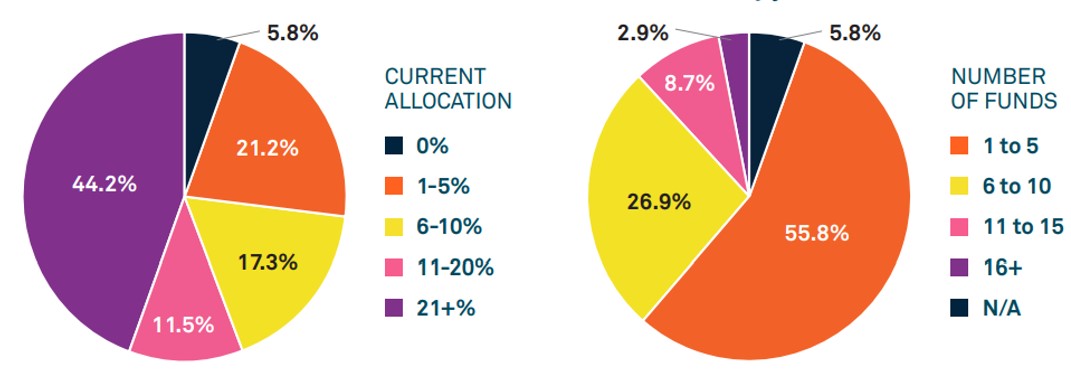Alt Investments
HNW Clients Still Not Showing Big Love To Alternatives – BNY Study

For all the hype and commentary about alternatives – a wide term spanning VC to hedge funds and commodities – these areas don't make up a big chunk of HNW portfolios, according to a survey of over 100 wealth managers in the US. But allocations are set to increase, it finds.
While the wealth management industry has been regaled for more
than a decade about the merits of alternative investments, a
report by BNY finds that less than 3 per cent of HNW portfolios
hold these assets.
BNY produced the findings in its Wealth Trends in
Alternatives report, based on the views of more than 100
wealth managers in the US.
The survey found that during the coming next 10 years, private
wealthy investors will load up on alternatives to $12 trillion
from $4 trillion.
Areas such as private credit, equity, forms of real estate,
infrastructure and hedge funds have grown in use, albeit with
variations, such as during the pandemic and when interest rates
spiked after lockdowns ended in most nations in 2021. A decade of
ultra-low rates after 2008, along with structural shifts from
public listed markets, has driven inflows into the area. And with
hedge funds, their famed ability to deliver results in sometimes
difficult markets, remains an attraction, although the sector has
seen fee compression from 20-plus years ago.
This news service has noticed how large firms in the private
markets area, such as Carlyle, Blackstone and KKR, have built out
private wealth arms, as they see HNW and UHNW individuals,
including family offices, as important sources of growth.
Among details of the BNY paper, it found that 84 per cent of
survey participants using alternatives expect their target
allocation to increase in a year’s time; 52 per cent think it
will be significantly higher.
The greatest growth is likely to be in natural resources, hedge
funds and real estate investment trusts, with 61 per cent, 62 per
cent and 66 per cent, respectively; allocations to private equity
are expected to grow for 63 per cent of respondents, though more
expect this increase to be only slightly higher.
Diversification of returns and increased return potential are
equally the greatest drivers for future investment according to
respondents, with 84 per cent selecting both as reasons for
anticipated increases.
The vast majority of respondents (94 per cent) have already
allocated client portfolios to alternatives. Of those, 44 per
cent reported allocating over one-fifth of private client
portfolios to alts (see charts below), supporting the apparent
trend of wealth managers moving away from traditional
60/40 portfolios (60 per cent equity, 40 per cent bonds)
toward more diversified asset allocations. Only 6 per cent
of respondents reported not having a current allocation to
alternatives.

Source: BNY
Obstacles
There are challenges to overcome. Respondents to the BNY survey
said the largest operational barriers for clients in entering the
field are complying with legal and regulatory requirements and
managing manual documents. Confirming a legal, risk or compliance
matter was viewed by 51 per cent of respondents as being harder
than in the traditional investments space.
The most time-consuming part of the subscription document/order
entry form process, according to 78 per cent, is completing a
legal, risk or compliance matter. This was followed by verifying
investor data and completing numerous manual fields at 66 per
cent and 51 per cent, respectively.